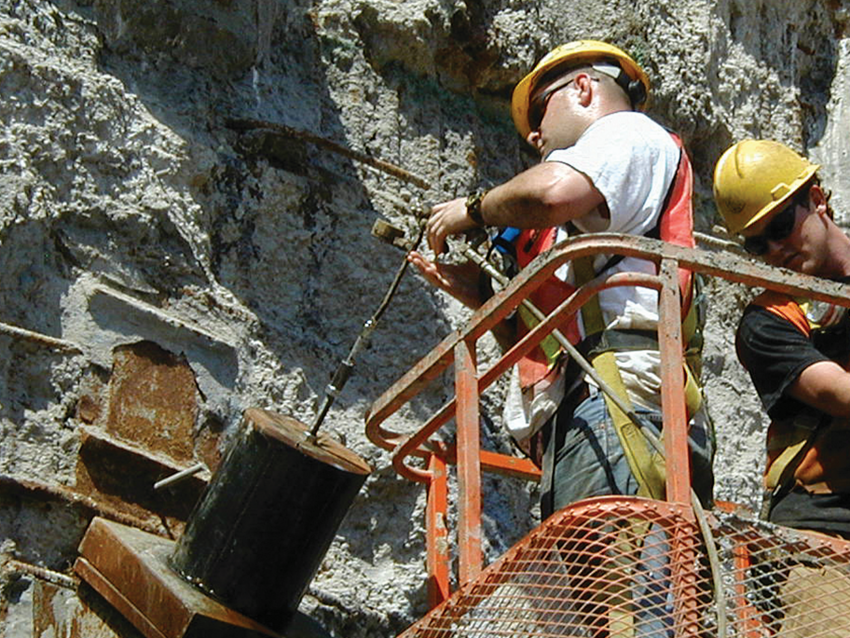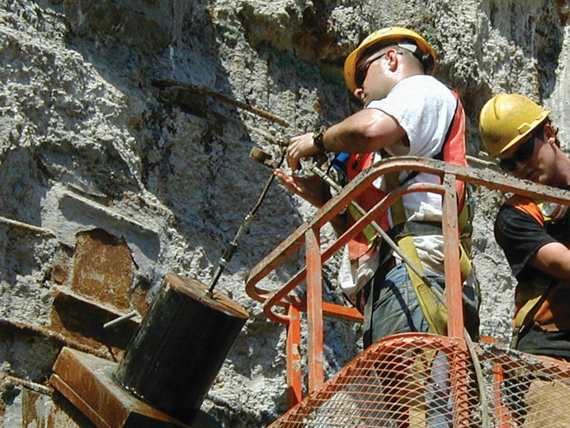Keller initiated a chemical grouting program to address groundwater leakage and potential ground loss through the damaged perimeter slurry wall “bathtub” area located 75-ft below street level, 66-ft below the water table.

The project
When Keller was called to the World Trade Center the week of September 11, 2001, it was initially to provide extensive emergency-response dewatering services. The scope of the company’s involvement in the massive rehabilitation effort was soon extended to include a challenging program of urethane grouting to control seepage and ground loss through the exposed slurry wall joints, cracks and tieback penetrations.
The challenge
The below-grade area of the site, referred to as “the bathtub” during the recovery operation, was located inside a 3-ft-wide perimeter slurry wall that was severely damaged when the towers collapsed. Dewatering in this area was performed to reduce the hydrostatic loading on the dangerously unstable wall concurrent with the installation of new tiebacks (by others). As debris removal within the bathtub began, external pressure on the outside of the slurry walls, primarily due to groundwater loading, caused significant movement of the wall panels, resulting in leakage between panel joints and the potential for significant ground loss.
The solution
Keller used a single-component hydrophilic urethane grout that activated upon contact with water to form highly flexible and adhesive polyurethane foam. Sealing the slurry wall joints involved drilling into the wall and bisecting the joints at a 45° angle. The urethane grout was then injected into the wet joints using a high-pressure injection pump. The fast-reacting grout quickly halted the flow of water, which in places was as great as 100 gpm. For the tieback penetrations, excess cable tendons at the tieback interfaces were cut and fitted with a custom fabricated steel housing and cap equipped with an injection port and relief valve. High pressure pumps injected grout directly into the high-pressure flow, forcing it down the cable housing. This technique enabled grout activation and effectively sealed the flowpaths.
